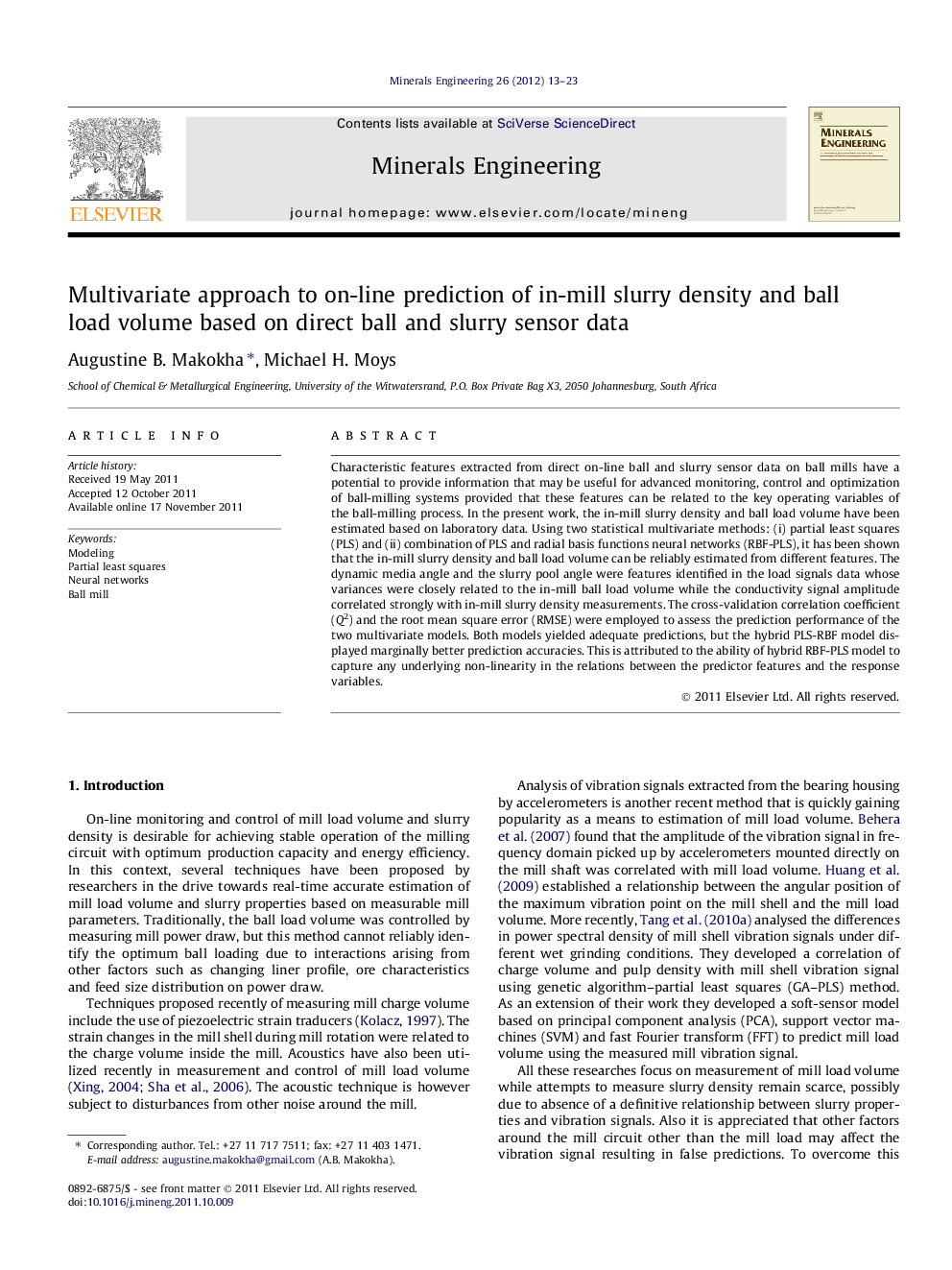| کد مقاله | کد نشریه | سال انتشار | مقاله انگلیسی | نسخه تمام متن |
|---|---|---|---|---|
| 233781 | 465363 | 2012 | 11 صفحه PDF | دانلود رایگان |

Characteristic features extracted from direct on-line ball and slurry sensor data on ball mills have a potential to provide information that may be useful for advanced monitoring, control and optimization of ball-milling systems provided that these features can be related to the key operating variables of the ball-milling process. In the present work, the in-mill slurry density and ball load volume have been estimated based on laboratory data. Using two statistical multivariate methods: (i) partial least squares (PLS) and (ii) combination of PLS and radial basis functions neural networks (RBF-PLS), it has been shown that the in-mill slurry density and ball load volume can be reliably estimated from different features. The dynamic media angle and the slurry pool angle were features identified in the load signals data whose variances were closely related to the in-mill ball load volume while the conductivity signal amplitude correlated strongly with in-mill slurry density measurements. The cross-validation correlation coefficient (Q2) and the root mean square error (RMSE) were employed to assess the prediction performance of the two multivariate models. Both models yielded adequate predictions, but the hybrid PLS-RBF model displayed marginally better prediction accuracies. This is attributed to the ability of hybrid RBF-PLS model to capture any underlying non-linearity in the relations between the predictor features and the response variables.
The slurry density and ball load volume inside a laboratory ball mill have been estimated by two statistical multivariate methods: (i) partial least squares – PLS and (ii) combination of PLS and radial basis functions neural networks (RBF-PLS) based on characteristic features contained in the ball and slurry sensor data. Figure GA illustrates the architecture of the combined partial least squares – neural network multivariate model employed in our study.Combined partial least squares – neural network multivariate model architecture for a single principal component.Figure optionsDownload as PowerPoint slideHighlights
► In-mill slurry density and ball loading have been estimated by multivariate methods.
► Features extracted from the media and slurry sensor data were used as predictors.
► Principal features were media angle, slurry pool angle and slurry signal amplitude.
► Media angle and the slurry pool angle correlated well with in-mill ball load volume.
► Slurry signal amplitude correlated well with the in-mill slurry density measurements.
Journal: Minerals Engineering - Volume 26, January 2012, Pages 13–23